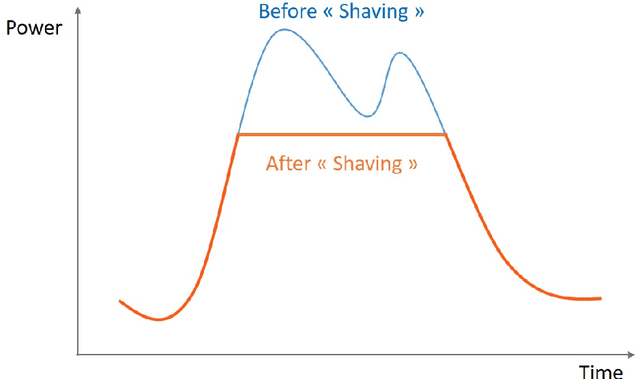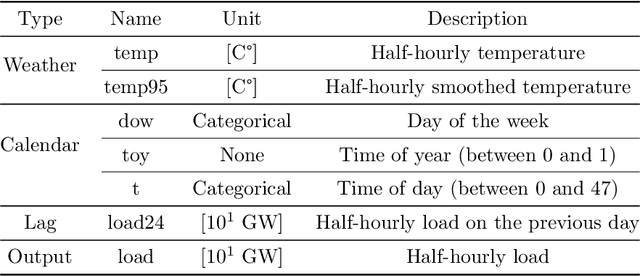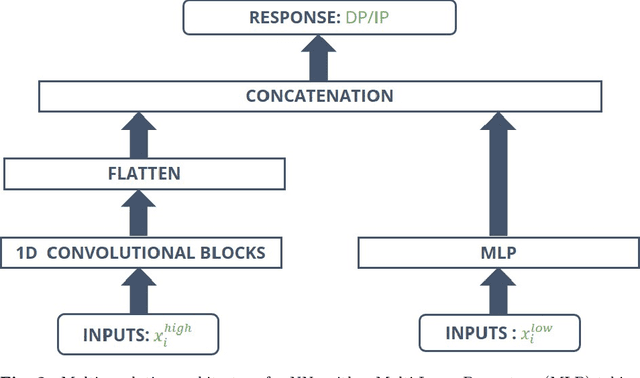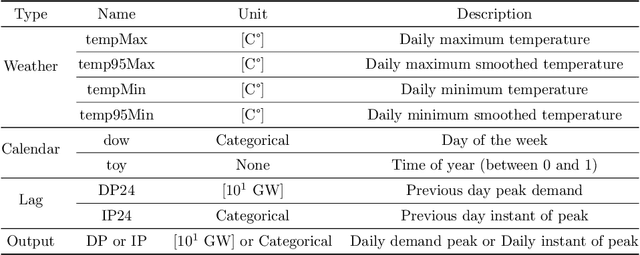Yvenn Amara-Ouali
EDF R&D
Conformal Prediction for Hierarchical Data
Nov 20, 2024Abstract:Reconciliation has become an essential tool in multivariate point forecasting for hierarchical time series. However, there is still a lack of understanding of the theoretical properties of probabilistic Forecast Reconciliation techniques. Meanwhile, Conformal Prediction is a general framework with growing appeal that provides prediction sets with probabilistic guarantees in finite sample. In this paper, we propose a first step towards combining Conformal Prediction and Forecast Reconciliation by analyzing how including a reconciliation step in the Split Conformal Prediction (SCP) procedure enhances the resulting prediction sets. In particular, we show that the validity granted by SCP remains while improving the efficiency of the prediction sets. We also advocate a variation of the theoretical procedure for practical use. Finally, we illustrate these results with simulations.
Leveraging Graph Neural Networks to Forecast Electricity Consumption
Aug 30, 2024Abstract:Accurate electricity demand forecasting is essential for several reasons, especially as the integration of renewable energy sources and the transition to a decentralized network paradigm introduce greater complexity and uncertainty. The proposed methodology leverages graph-based representations to effectively capture the spatial distribution and relational intricacies inherent in this decentralized network structure. This research work offers a novel approach that extends beyond the conventional Generalized Additive Model framework by considering models like Graph Convolutional Networks or Graph SAGE. These graph-based models enable the incorporation of various levels of interconnectedness and information sharing among nodes, where each node corresponds to the combined load (i.e. consumption) of a subset of consumers (e.g. the regions of a country). More specifically, we introduce a range of methods for inferring graphs tailored to consumption forecasting, along with a framework for evaluating the developed models in terms of both performance and explainability. We conduct experiments on electricity forecasting, in both a synthetic and a real framework considering the French mainland regions, and the performance and merits of our approach are discussed.
Forecasting Electric Vehicle Charging Station Occupancy: Smarter Mobility Data Challenge
Jun 09, 2023Abstract:The transport sector is a major contributor to greenhouse gas emissions in Europe. Shifting to electric vehicles (EVs) powered by a low-carbon energy mix would reduce carbon emissions. However, to support the development of electric mobility, a better understanding of EV charging behaviours and more accurate forecasting models are needed. To fill that gap, the Smarter Mobility Data Challenge has focused on the development of forecasting models to predict EV charging station occupancy. This challenge involved analysing a dataset of 91 charging stations across four geographical areas over seven months in 2020-2021. The forecasts were evaluated at three levels of aggregation (individual stations, areas and global) to capture the inherent hierarchical structure of the data. The results highlight the potential of hierarchical forecasting approaches to accurately predict EV charging station occupancy, providing valuable insights for energy providers and EV users alike. This open dataset addresses many real-world challenges associated with time series, such as missing values, non-stationarity and spatio-temporal correlations. Access to the dataset, code and benchmarks are available at https://gitlab.com/smarter-mobility-data-challenge/tutorials to foster future research.
Daily peak electrical load forecasting with a multi-resolution approach
Dec 08, 2021



Abstract:In the context of smart grids and load balancing, daily peak load forecasting has become a critical activity for stakeholders of the energy industry. An understanding of peak magnitude and timing is paramount for the implementation of smart grid strategies such as peak shaving. The modelling approach proposed in this paper leverages high-resolution and low-resolution information to forecast daily peak demand size and timing. The resulting multi-resolution modelling framework can be adapted to different model classes. The key contributions of this paper are a) a general and formal introduction to the multi-resolution modelling approach, b) a discussion on modelling approaches at different resolutions implemented via Generalised Additive Models and Neural Networks and c) experimental results on real data from the UK electricity market. The results confirm that the predictive performance of the proposed modelling approach is competitive with that of low- and high-resolution alternatives.
 Add to Chrome
Add to Chrome Add to Firefox
Add to Firefox Add to Edge
Add to Edge